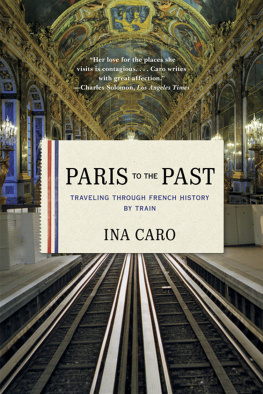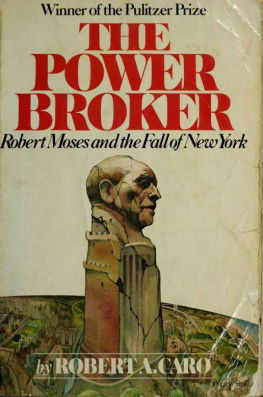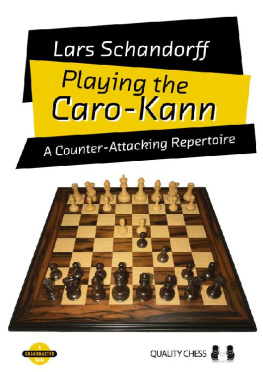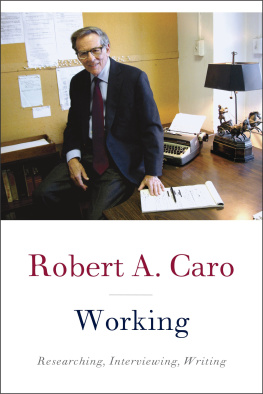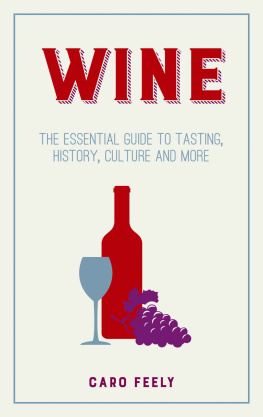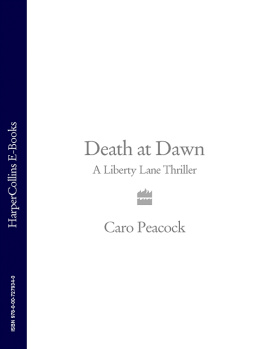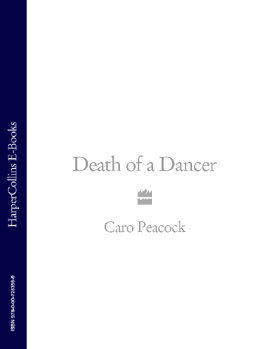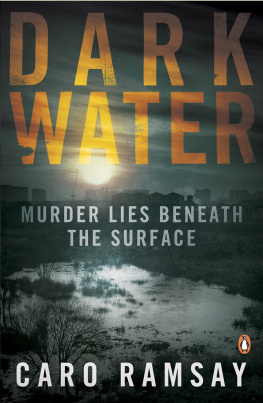W. W. NORTON & COMPANY
This is not an age when prince charmings, idealistic knights, and true love at first sight are taken seriously. When I was still in my teens, I fell in love with Bob, and he has been my Prince Charming ever since. And I want to thank him for never once changing into a frog, and for visiting with me the castle of Sleeping Beauty, which lies in an enchanted valley filled with a thousand castles and food so magical that fish and asparagus taste better than cake.
PROLOGUE
Two Love Affairs
B OB AND I FELL IN LOVE, FIRST WITH EACH OTHER, AND THEN with France. In both cases it was love at first sightbut there was quite a long time between the sightings.
I cannot recall precisely when I fell in love with history, but I do know exactly when I fell in love with Bob. I was, in fact, sixteen when I saw him for the first time. I was at a mixer at Princeton with my best friend from Trenton High when I saw him across the room. Even with his crew cut, I thought he was the handsomest boy I had ever seen. The moment I saw him, I turned to my friend standing next to me and said, Thats the boy Im going to marry. You can ask Marcia Kaminker, or whatever her name is now, if that isnt true.
On our honeymoon, three years later, we drove all across America. Since Bob did not do quite as well at blackjack in Las Vegas as he was sure he would, my father had to come and bail us out at the Pennsylvania Turnpike tollbooth when we returned from our two-month journey. Our trip across country had been so much fun that we planned to take the same type of trip in France, as soon as we had saved enough money.
It would be, however, many years later before our love affair with France began. First, there was a baby and then there was a book, a book that Bob had quit his job as a reporter at Newsday to write. The book would turn out to be The Power Broker , and many things were to happen with it of which we have always been proud, but at the time he was working on it, no one seemed particularly interested in it, and Bob was writing it for what we called the worlds smallest advance. We said that with a laugh for a while, but as time passed, it wasnt so funny. Bob had thought it would take him nine months to finish. He simply couldnt imagine anything taking him more than nine months to write. But it actually took seven years, and we were broke for most of those yearstotally broke. After the first year, we had to sell our little house on Long Island and move to an apartment in the Bronx, leaving our piano and beloved pool table behind.
It had been a long time since I had been able to look either my butcher or my dry cleaner in the eye when The New Yorker , much to Bobs amazement, bought an excerpt from the book for enough money for me to pay my bills and for Bob and me to finally take our trip to France.
We took the check, paid the butcher and dry cleaner, and left for France the next day. We didnt even stop to make a hotel reservationBob asked the flight attendant where to stay in Paris and she suggested a little hotel on the Rue Saint-Hyacinthe. It was 1974, and you could do that then, not make reservations in France. The hotel was in a great location, but old and small. I remember that the concierge couldnt get the air-conditioning to work, nor could she grasp the concept of the collect call on the telephone. She also scrubbed everything with Cloroxincluding the sidewalk in front of the hotel. We thought it was just the grandest place in the world. When we returned several years later, we felt surely the rooms must have shrunk.
After a week in Paris, we rented a car and began driving through countrysides more glorious than anything we had ever imagined. So glorious, in fact, was that maiden trip that year after year we returned to France, stayed a few nights in a hotel in Paris, and then spent a month or two driving around a different section of the country. What I quickly realized was that each section seemed to have its own history. One year we drove around the Dordogne Valley in central France and the Hundred Years War came alive. The next year, we explored Languedoc in the south, with its walled medieval city and Romanesque churches. On each trip, I felt as if I were escaping from the present into the past, into ages I had loved reading about in school. Although history had been my major in collegemy thesis in graduate school had dealt with Dagobert I, who was a seventh-century French kingit wasnt until our first trip to France that it dawned on me that visiting sites where major historic events occurred, places built a hundred, a thousand, years ago, could still evoke the period in which they were built.
This is because the French preserve their history, restoring their fortresses and castles so that you can see them as they were, while in America we too often demolish ours. This difference struck me one day as I was leavingas quickly as possible, I might adda bullfight at the amphitheater in the ancient Roman city of Nmes. Nauseated by the sight of a gored and insufficiently padded horse, I couldnt help thinking, as I was rushing from my seat, that the amphitheater must have looked exactly the same when gladiators were fighting there nearly two thousand years before. And I wondered if, had I been in that arena two thousand years ago, the sight of a gladiators blood would have sickened me then as the horses blood had now.
It wasnt until years later, when we were traveling in northern Italy, that I realized how unique the French were in preserving their past. I remember picking up a brochure at a hotel we were staying at in Florence. It urged tourists to visit the Piazza dellAnfiteatro in Lucca, which had once been the site of a Roman coliseum, and which, the brochure said, had preserved its characteristics since Roman times. Well, we went to Lucca in search of this ancient Roman coliseum, hoping to be transported back to the time when gladiators fought there. After an hour or so of looking, we found ourselves standing in the center of a large oval piazza, with laundry hanging on lines from the windows of apartments built into the surrounding oval walls. In frustration, I asked a woman selling flowers, in my best Italian accent: Dov Colosseo? She laughed and responded in English (everyone always answers me in English no matter what language I try to speak): You are standing in the middle of it.
While I did discover a memorable cracked-wheat soup made from a centuries-old recipe in Lucca, I did not find the evocation of the ancient Roman world. But I would in Francewhether at Orange, Arles, or Nmescities the Emperor Augustus built as miniature Romes for his legionnaires when southern France was a Roman province (thats why its called Provence). Because the French, being the French, preserve their past with such pride and with such meticulous attention to detail, we actually had the sense of stepping back into the past. One restorer, at the Castle of Beynac, actually spent twenty years petrifying wood in a solution so that the staircase he was restoring would be exactly like the one that had fallen into dishabille. A countess who was restoring her chteau at Villesavin came close to tears when she told me she didnt have the money to replace the gilded lead roof that had been removed by Napoleon, who had used the lead to make bullets for his soldiers. Because restoration is so scrupulously executed, French fortresses, castles, and cathedrals seem to be frozen in the period in which they were built, making it possible to turn a French vacation into a magical tour through time.

